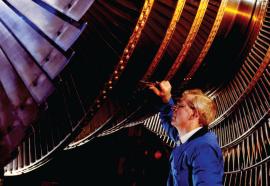People
The New York ISO named Mary McGarvey its vice president and chief financial officer. Pacific Gas and Electric Co. announced that its board of directors elected Barbara Barcon as vice president, finance and chief financial officer. Henry B. “Brew” Barron was appointed president, chief executive officer and chief nuclear offer of Constellation Energy Nuclear Group. MidAmerican Energy Holdings Co. announced that Gregory E. Abel became the chief executive officer. And others...






